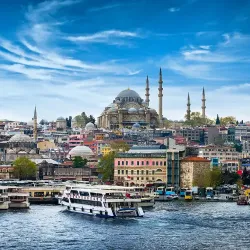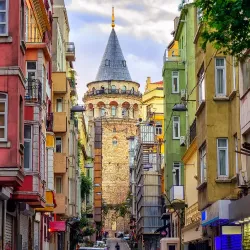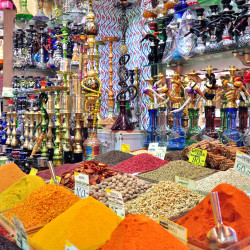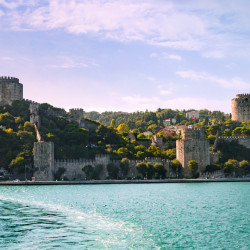What comes to your mind as a tourist when you are told about Istanbul and the culture of Turkey? We want you to forget everything you know and put aside your prejudices if any. Because with this article that you are reviewing, you will say that I should go to Turkey and learn about Istanbul in particular. You will love this city, which has been blended with Greek, Byzantine, and Ottoman culture for centuries.
Multicultural Structure
Turkey has been one of the most popular destinations for centuries due to its connections to Central Asia, the Balkans, Siberia, and the Middle East and is home to many cultures. The city of Istanbul, in particular, reflects the multicultural nature of the country and offers its visitors magical sightseeing opportunities. The reason for this situation is that Istanbul has been the capital of the Byzantine Empire for centuries and then came under the protection of the Ottoman Empire.
During the imperial period, religion, language, and racial segregation were not observed in the administration of Istanbul, and therefore customs developed in a multicultural way. For this reason, the historical buildings of Istanbul include mosques and church buildings. Another exciting feature that you can hear about Istanbul is that it has been known as an entertainment center since its early times. Istanbul was known for its Ramadan entertainment as a return to Turkish culture during the Ottoman period. Especially the bath sessions coming from the palace culture were held in the well-known baths of Istanbul.
Istanbul continues to receive immigration from all over Turkey and is known as the city of opportunities. Discover Istanbul to visit many historical buildings, try delicious dishes of Turkish culture, and get lost in the city's magic.
Historical Culture of Istanbul
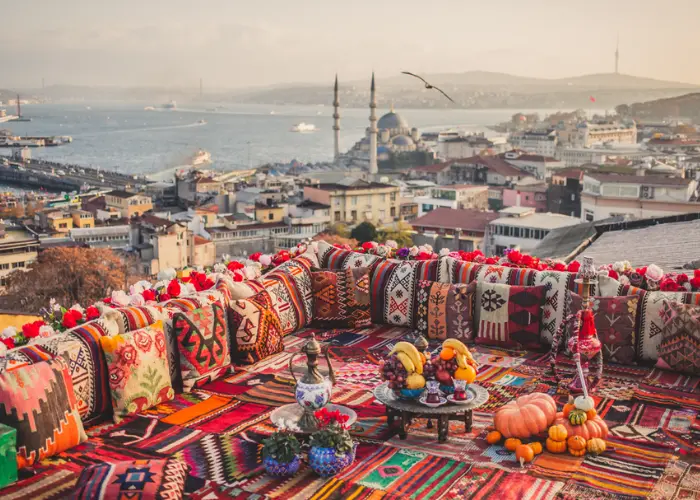
While researching Istanbul, you will see that no state or nation has been able to get rid of being impressed by the beauty of Istanbul in the historical past. Therefore, in addition to the Turkish culture, a multicultural structure was formed in the city over time and has survived to the present day. For this reason, this city is one of the must-see places for tourist trips, and it will give you an experience that you will not regret.
Istanbul has had different names over the centuries, and these names are mentioned in historical writings, poems, and still in songs today. But the name "Istanbul," contrary to what is believed, was not placed in our language during the Ottoman period. Istanbul has initially used the meaning of "from the city," which was pronounced by the Greeks. Muslims originally called the city "Konstantiniyye," but the Istanbul pronunciation form began to be used during the Ottoman period.
Before discovering Istanbul, you should know that more than one empire reigned in this city and left many historical monuments. Istanbul was a city with the name "Byzantium" for the first time in the years when Ancient Greece founded the city. During the Roman Empire, which lasted until BC 330, the city became the capital and was loaded with art and valuable buildings by the Emperors. Istanbul, which experienced one of its best periods during the reign of the Roman emperor Constantine the Great, became "Constantinople" after the monarch's death. After 395 BC, the city came under the auspices of the Byzantine Empire and was one of the brightest and wealthiest cities.
The acquisition of a multicultural structure was an inevitable end for Istanbul, which has been very popular for dozens of rulers for centuries. Finally, the city, which is blended with Turkish culture, has become an indispensable point for tourists and locals with its natural beauty and historic buildings. If you are planning to take action to discover Istanbul, you can visit the city's attractions with Istanbul.com.
Culture in Istanbul
When you discover Istanbul, you will see that the city is decorated with magnificent mosques and madrasas, as well as charming palaces. Islam, a very important part of Turkish culture, has penetrated all these structures and made the places even more special. One of the essential historical details you need to know about Istanbul related to Turkish culture is that the Ottoman Emperor Fatih Sultan Mehmet conquered the city in 1453. After this date, the historical and cultural structure of the city has undergone changes. Social life and traditions have been affected by this situation.
In the Ottoman Period, historical buildings dating back to other empires were preserved or modified, and many new palaces and mosques were built. Of these buildings, the Dolmabahce Palace was built by Abdulmecid Khan in 1856. The beach where Dolmabahçe Palace is located is so fascinating that it has been home to other palaces since the Byzantine era. Dolmabahce Palace is so important for Turkish culture that it was built during the Ottoman Period and was prepared for the accommodation of the Turkish leader Mustafa Kemal Atatürk during the Republican period. A few of the most important buildings of the Palace are the Harem, the Dolmabahçe Mosque, and the Clock tower.
The Blue Mosque, built during the Ottoman Period and one of the centers where you will hear perhaps the most about Istanbul, is very valuable. Maybe one of the most captivating points to start the trip to discover Istanbul is known as this mosque. The Ottoman Emperor Sultan Ahmet I, who built the mosque, wanted to build an imposing structure that would appear all over Istanbul. The mosque will fascinate you with its magnificent structure and give you a visual feast with its structure covered with Iznik Tiles belonging to Turkish culture.
Another popular place for tourists to discover Istanbul is the famous Hagia Sophia Mosque. The Hagia Sophia Mosque was built during the Eastern Roman Empire to be the largest church in Istanbul. As a result of the multicultural structure and cultural synthesis, this structure has changed for centuries and has become a church, museum, and mosque. Classical marble artistry belonging to the Ottoman architectural culture was used in the conversion of Hagia Sophia, which was converted from a Church to a Mosque after 1453. This magnificent building has been used as a museum for some time, and today it is used as a Mosque, a religious part of Turkish culture, to serve Islam.
 English
English  Indonesian
Indonesian  Urdu
Urdu  Taiwanese
Taiwanese  Russian
Russian  Romanian
Romanian  Portuguese
Portuguese  Persian
Persian  Macedonian
Macedonian  Korean
Korean  Japanese
Japanese  Italian
Italian  Indian
Indian  Hungarian
Hungarian  Greek
Greek  German
German  Croatian
Croatian  Chinese
Chinese  Bulgarian
Bulgarian  Arabic
Arabic  French
French  Spanish
Spanish 

